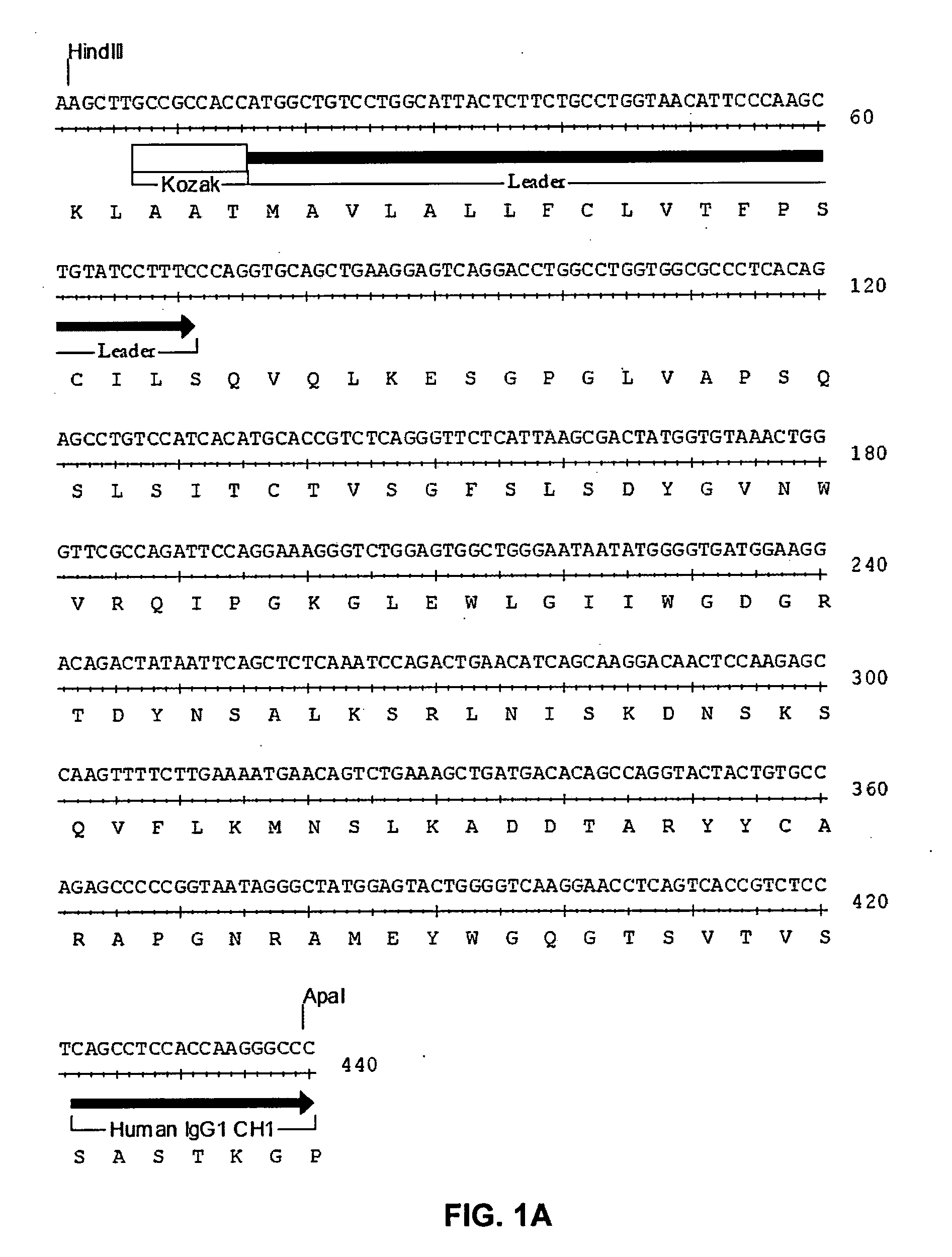Humanized anti-CD22 antibodies and their use in treatment of oncology, transplantation and autoimmune disease
an anti-cd22 antibody and humanized technology, applied in the field of humanized anti-cd22 antibodies and their use in the treatment of oncology, transplantation and autoimmune diseases, can solve the problems of significant morbidity and disability
- Summary
- Abstract
- Description
- Claims
- Application Information
AI Technical Summary
Benefits of technology
Problems solved by technology
Method used
Image
Examples
Embodiment Construction
[0092]The present invention relates to human, humanized, or chimeric anti-CD22 antibodies that bind to the human CD22 antigen, as well as to compositions comprising those antibodies. In certain embodiments the human, humanized, or chimeric anti-CD22 antibodies of the invention are those that mediate antigen-dependent-cell-mediated-cytotoxicity (ADCC). In particular embodiments, the present invention is directed toward compositions comprising human, humanized, or chimeric anti-CD22 antibodies of the invention are of the IgG1 and / or IgG3 human isotype, as well as to human, humanized, or chimeric anti-CD22 antibodies of the IgG2 and / or IgG4 human isotype, that preferably mediate human ADCC, CDC, and / or apoptosis.
[0093]The present invention provides chimeric and humanized versions of anti-CD22 mouse monoclonal antibody, HB22.7. In one embodiment, the humanized anti-CD22 antibodies bind to human CD22 with an affinity comparable to that of the mouse monoclonal antibody designated HB22.7 o...
PUM
| Property | Measurement | Unit |
|---|---|---|
| width | aaaaa | aaaaa |
| nucleic acid | aaaaa | aaaaa |
Abstract
Description
Claims
Application Information
 Login to View More
Login to View More - R&D
- Intellectual Property
- Life Sciences
- Materials
- Tech Scout
- Unparalleled Data Quality
- Higher Quality Content
- 60% Fewer Hallucinations
Browse by: Latest US Patents, China's latest patents, Technical Efficacy Thesaurus, Application Domain, Technology Topic, Popular Technical Reports.
© 2025 PatSnap. All rights reserved.Legal|Privacy policy|Modern Slavery Act Transparency Statement|Sitemap|About US| Contact US: help@patsnap.com



